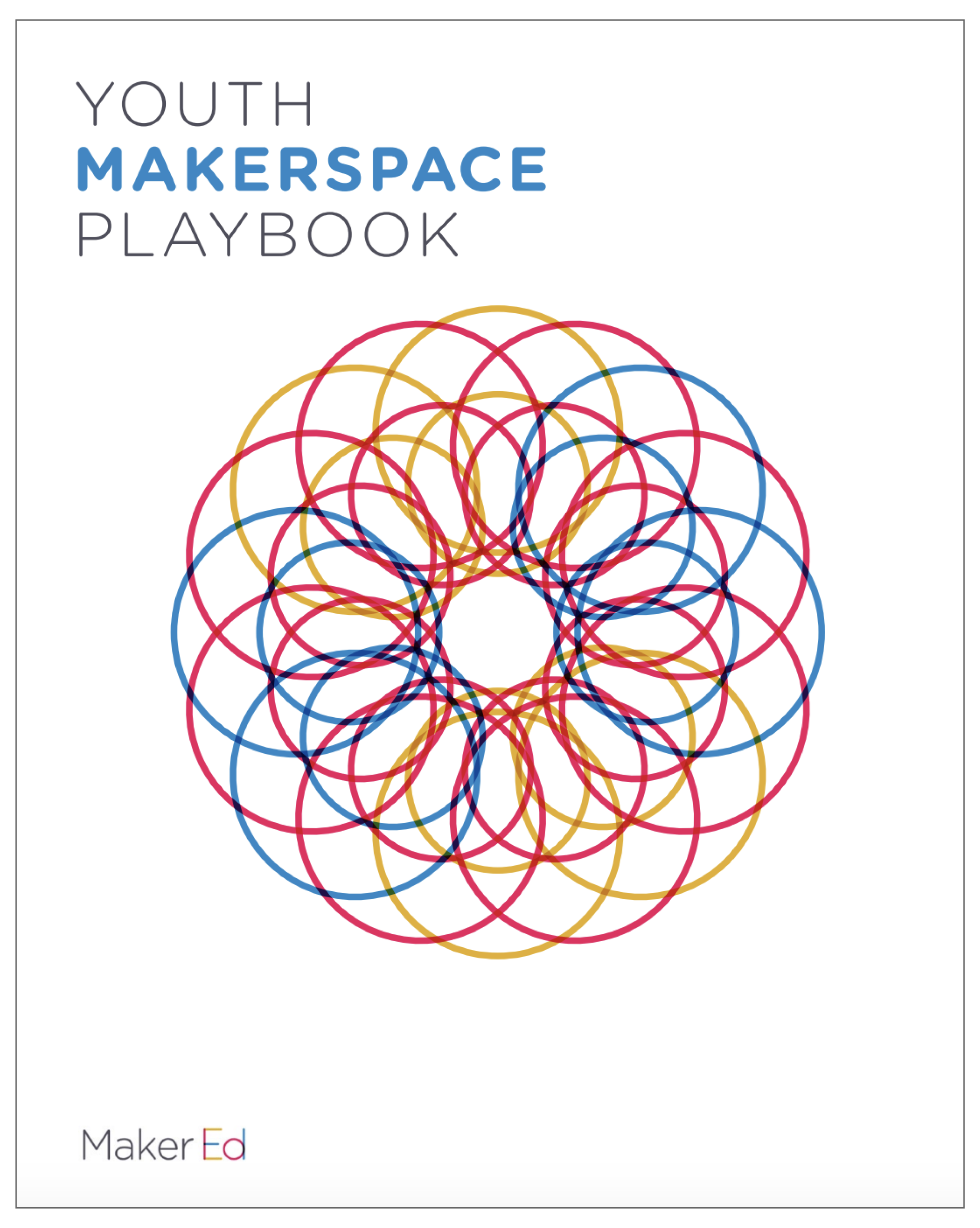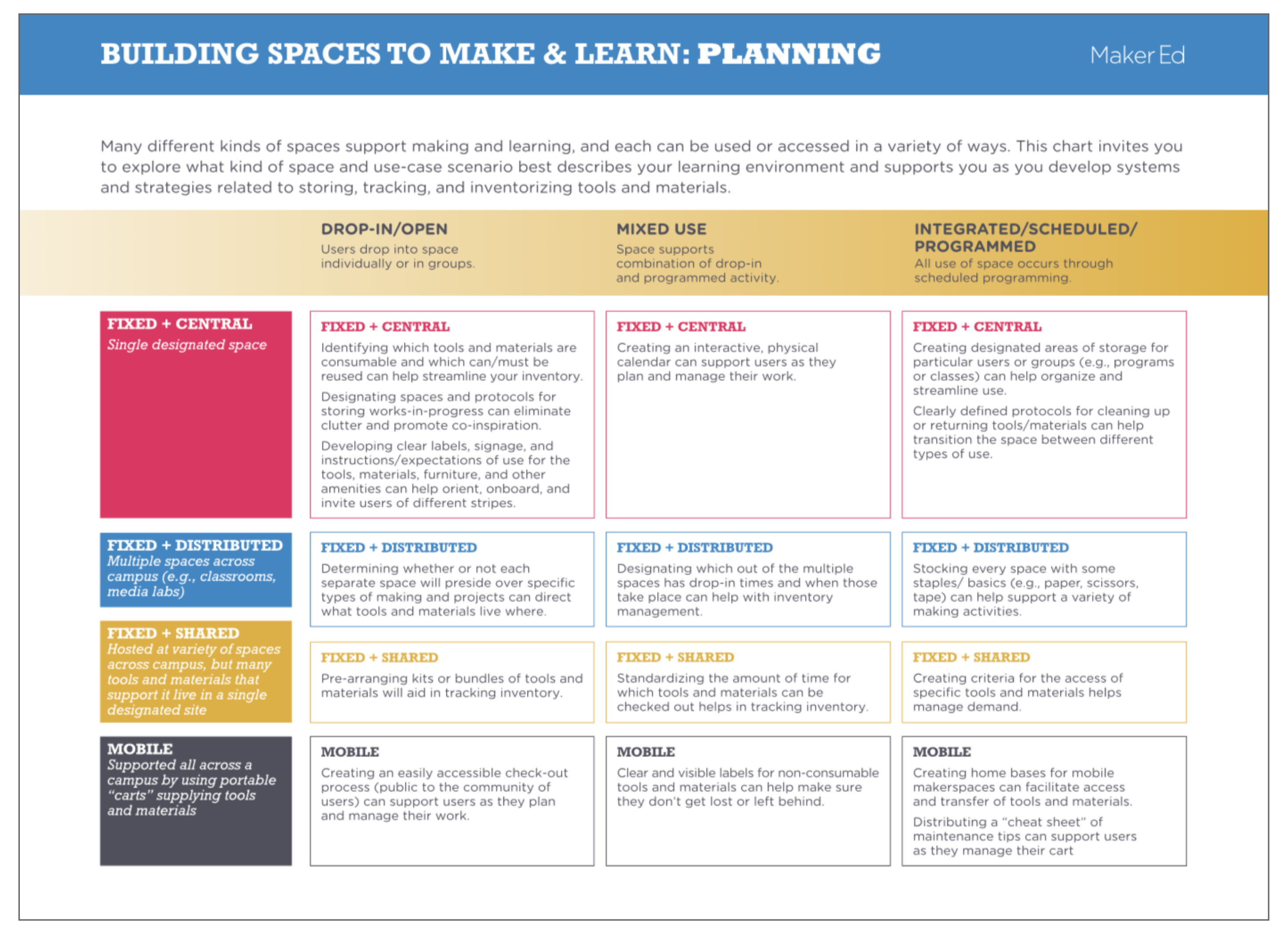Dive into the behind-the-scenes operations of developing, managing, and sustaining a space for making and learning with guidance from this module. Through the exercises here, you’ll tackle questions related to noticing patterns of storing, tracking, and organizing tools and materials. From your observations, you can begin developing and refining a plan or scaffold for creating systems of maintenance.
 Notice
Notice
Choose an activity or lesson that you’ll be running/facilitating. Next, identify and list all materials and tools that the activity or lesson requires. Of those, choose one material and one tool to follow, trace, or track. Throughout the activity, consider:
- Where did you find the tool/material?
- Where did you place the tool/material in preparation for the activity?
- Where did the tool/material travel during the activity, and how?
- Where did the tool/material end up at the end of the activity?
- What will you do with the tool/material now that the activity is over?
 Reflect
Reflect
Now that you’ve followed, traced, or tracked one tool and one material, take a moment to reflect on your experience and your findings:
- How easy or difficult was it for you to find the materials? Was there signage that supported or hindered your access to the materials and tools?
- Were you surprised by the way the tools and materials were used, or by how they traveled or moved throughout the activity or lesson? Why or why not?
 Read
Read
Take a tour of some key considerations that help to focus the organization of materials and tools. Read through the following excerpts, which include examples of how different spaces for making and learning have organized, classified, and managed the tools and materials within their given space.
Sections from Maker Ed’s Youth Makerspace Playbook:
- Utility Considerations (pp. 24–26)
- Organizing It All (pp. 39–40)
- Makerspace Planning Sheet (p. 67)
Sections from Maker Media’s Makerspace Playbook School Edition:
- Reusable Tools List (p. 10)
- Consumable Materials List (p. 12)
 Reflect
Reflect
For each excerpt above, sum up one key takeaway in the style of a newspaper headline. Then, with these headlines in mind, take a look at your own space using Project Zero’s thinking routine, See, Think, Wonder.
Have any key considerations surfaced for organizing and/or examining the usage and accessibility of the tools and materials in your space?
How do your systems for organizing tools and materials relate to other systems you have in place for the maintenance and management of your space overall?
 Explore
Explore
Take a moment to identify another aspect of the maintenance and management of your space, whether related to tools and materials or not, that poses a challenge for you.
Many different kinds of spaces support making and learning, and each can be used or accessed in a variety of ways. Maker Ed’s Space Alignment chart invites you to explore what kind of space and use-case scenario best describes your current or ideal learning environment and supports you as you develop systems and strategies related to storing, tracking, and inventorying tools and materials.
When exploring the Space Alignment chart, find the intersection which best describes your current or ideal learning environment and consider the tip or question that you discover there. Consider the advantages and disadvantages of that intersection.
Additionally, reflect and make changes in reference to the following questions:
- Did you intentionally design for those advantages to show up?
- What would you need to modify in order to refine your operations or to move into another intersection on the chart?
- Roam around the other intersections on the chart to discover other aspects of space maintenance that you haven’t yet considered. How could they relate to your own environment?
This module was developed in collaboration with Goli Mohammadi (editorial) and Kim Dow (design). Maker Ed would also like to thank Schmidt Futures for supporting the creation of these learning modules.


